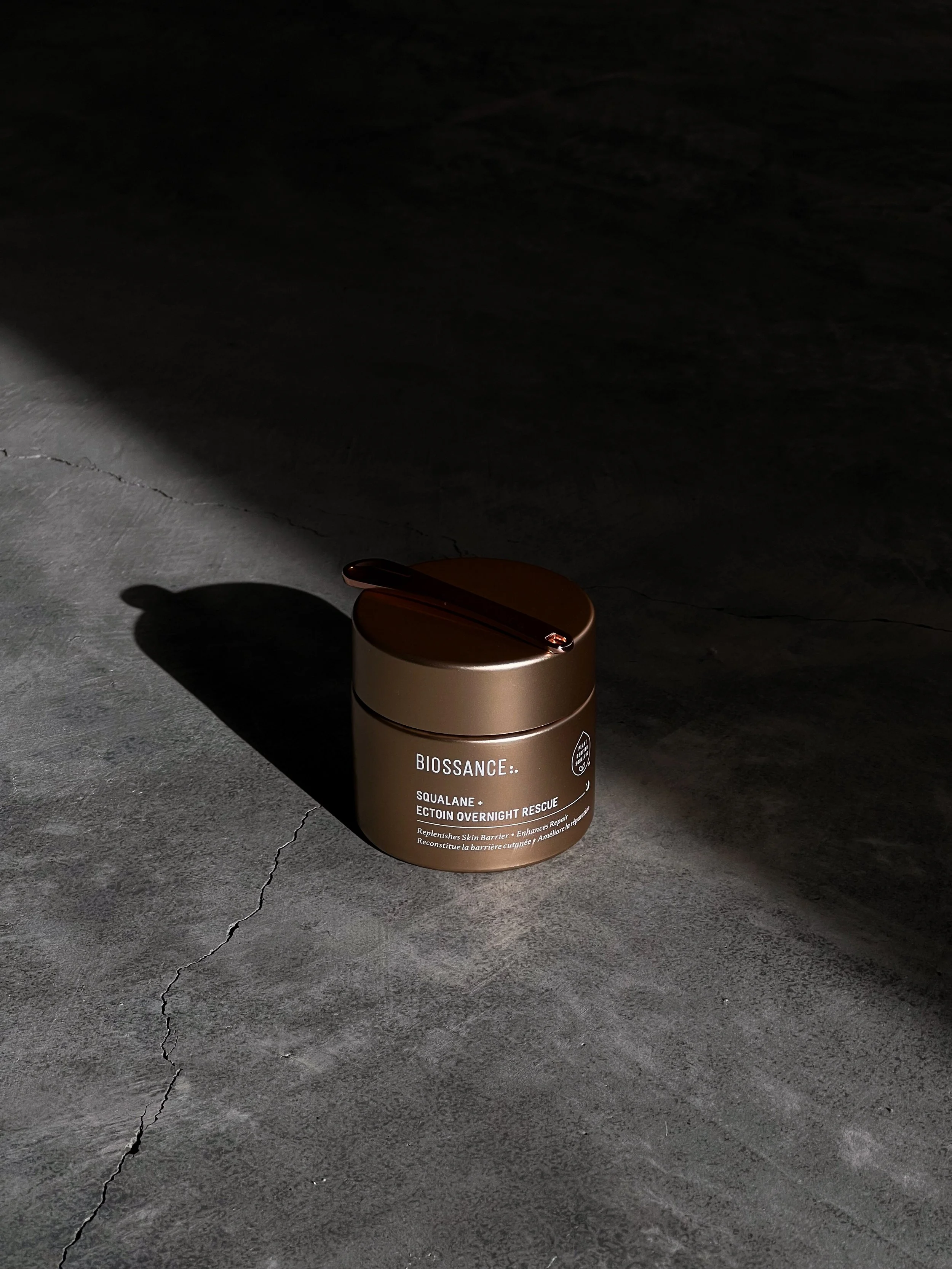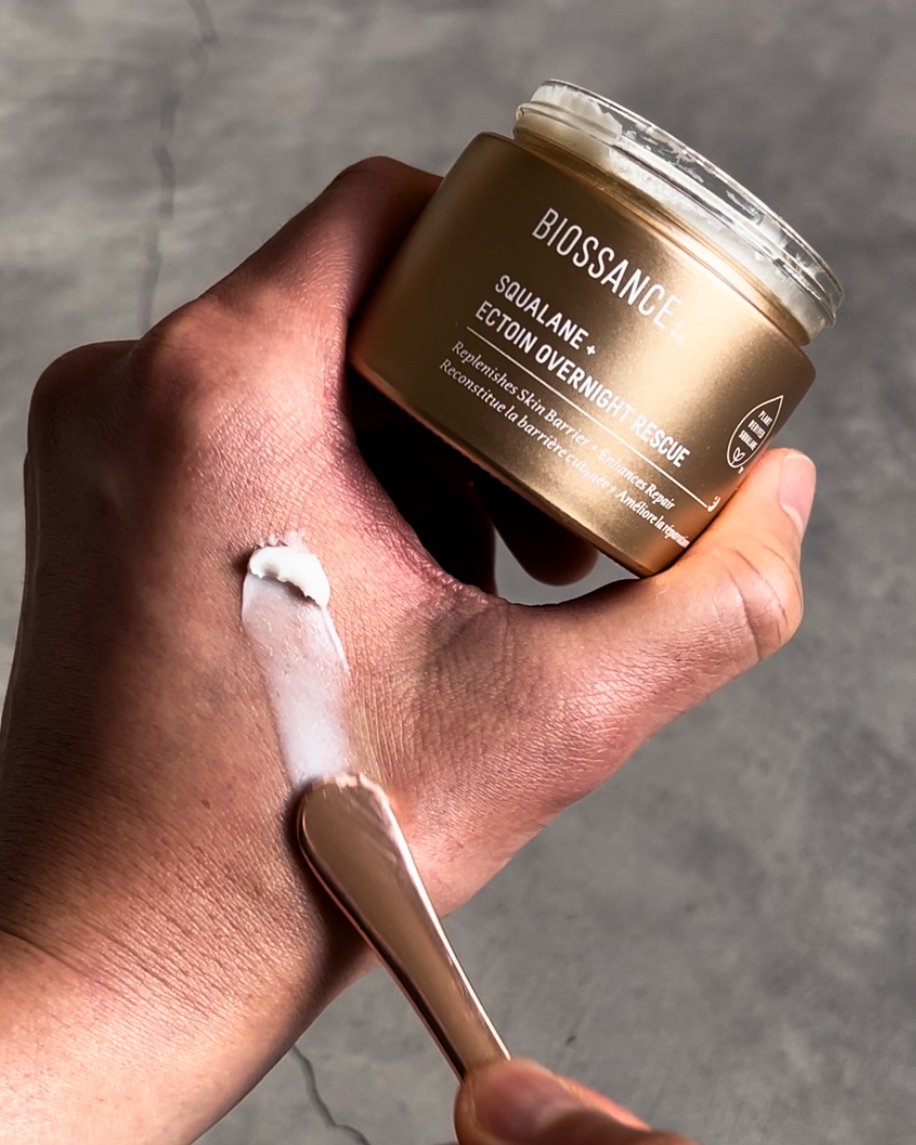This new skincare ingredient has been popping up everywhere: Supergoop’s Skin Tint (not yet launched at time of writing), Byoma Barrier+ Treatment ($19 at Ulta), Biossance Repair Cream ($68 at Sephora), and more. Ectoin sounds like something out of this world (or perhaps a ghost-like substance).
As it turns out, ectoin is an interesting ingredient derived from extremophile bacteria (specifically halophiles).
More and more brands have shifted their focus from exfoliating/brightening skin to improving skin barrier health. It’s a trend that has strong roots in Korean beauty, which emphasizes skin health. The result? More brands have looked towards ectoin and other barrier-enhancing ingredients.
What Is Ectoin?
First things first, what exactly is ectoin?
What Is Ectoin Made From?
It has origins in enabling microscopic organisms to survive harsh, high-salt environments. These microbes continue to be the manufacturing method of choice for the #1 ectoin supplier, Bitop. They use fermenters to grow a massive amount of Halomonas elongata, which is then processed for its ectoin.
Because they use microbes as their “workhorse” in the process, the ingredient is vegan!
Ectoin: Creating Order in Water
Your skin (and truly all cells in the entire world) rely on a certain amount of water to have their molecular machinery (protein/enzymes) function properly. The microbes that live in high-salt environments have created techniques to navigate sub-optimal, low-water density.
One of these techniques is employing ectoin. Side note: ectoin is actually the trade name of the ingredient; the compound’s actual name is ectoine. Cosmetic ingredient lists all incorrectly say ectoin, not ectoine.
The halophilic bacteria use ectoin on the outsides of their membranes to help gather water around them.
Ectoin creates order
Ectoin can basically hold a bunch of water molecules together, enabling the protein/molecular machines to function correctly. It’s considered a kosmotropic molecule, so it creates order within the water molecules together, which in turn helps stabilize other molecules like proteins.
It’s creating a better molecular environment for proteins to work appropriately. But it is important to note that ectoin is not directly interacting with the proteins. It’s just making sure the proteins/enzymes are getting the water content they need.
ectoin vs hyaluronic acid
But I’m sure you’ve already heard about hyaluronic acid (and probably polyglutamic acid) soaking up a bunch of water and holding it against your skin too as a humectant.
Hyaluronic acid is great at gathering water molecules in the environment and delivering it to the skin to maintain hydration. But it’s more of a passive process (not in the scientific definition of passive). It’s kind of like a sponge soaking up water.
Ectoin encourages water molecules to favorably stay together; hyaluronic acid is just grabbing them. Think of ectoin as filing water molecules into neat, orderly lines, while hyaluronic acid is a toddler tossing toys into a bin and hoping it all fits.
What Is Ectoin in Skincare?
My guess is that we will continue to see more skincare launches featuring ectoin as a hero ingredient. I’m looking forward to it, especially as it starts to hit the masstige/more affordable market. The new launch from Byoma (at just $19) is a great example of that.
Biossance Squalane + Ectoin Overnight Rescue Review
I recently purchased the Biossance overnight rescue cream to try out ectoin in a nourishing cream.
pros of biossance squalane + ectoin cream
If you live in a dry environment or it is deep in winter, this cream will work wonders for you. The ingredients are super moisturizing and your skin barrier will be grateful you’ve used this.
I took this on a trip to LA, and I am very glad that I did. My skin reacts very strongly to LA water—it gets very dry and irritated. This ectoin repair cream helped my skin retain its moisture and hydration.
Another good thing about this cream is that it is pretty matte. That means I am able to layer a facial oil on top to give that extra bit of moisturization without going overboard. It also works super nicely with the Biossance Squalane + Copper Peptide Rapid Plumping Serum ($68 at Sephora). Fun fact: that plumping serum also has ectoin in it too!
I really like how there’s no fragrance or dye in this. My pillowcase is also thankful for that.
cons of biossance ectoin cream
For $68, I expected this cream to be a luscious nightly dream. I was imagining something like Summer Fridays Jet Lag Masque ($49 at Sephora) or Fresh Beauty Floral Recovery Mask ($69 at Sephora). Both of those have a thick, but extremely spreadable texture that enables you to get a thin layer on your face.
The Biossance cream could not relate. It’s a balm-like texture that spreads unevenly onto your skin. It feels almost like parts of it are melting on contact, while the rest of it is still solid. The result is a face covered with streaky product. Yes, I am going to bed and no one will see. But it just bothers me that it doesn’t spread evenly for such a pricey product.
Another complaint I have is the ingredient list is not a groundbreaking one. It has the expected squalane and ectoin (which you can also find in the Stripes products, which was Biossance’s former sister company). Almost every ingredient (other than functionals) in there is just for moisturizing the skin. That’s totally fine! But it just means that you’ll need to rely on serums or oils to give you any other functional benefits.
If you want a plain Jane, blank canvas cream, this fits the bill. Another product that fits that bill (at almost a third of the price)? Tower28 SOS Cream ($24 at Sephora).
Final Thoughts
I am super excited for the new ectoin launches coming out. The Biossance Squalane + Ectoin Overnight Repair was not the launch for me—but I am sure someone out there wants to have a super occlusive barebones cream.
What ectoin products am I looking forward to trying out soon?
Supergoop Protec(tint) Daily SPF 50 Tint — launching in March 2024
Supergoop Triple Prep Weightless Multitasking Moisturizer ($48 at Sephora)
Peach & Lily Retinal For All Renewing Serum ($55 at Ulta)
* Note: links throughout this post may contain affiliate links, which help support this blog at no cost to you.





